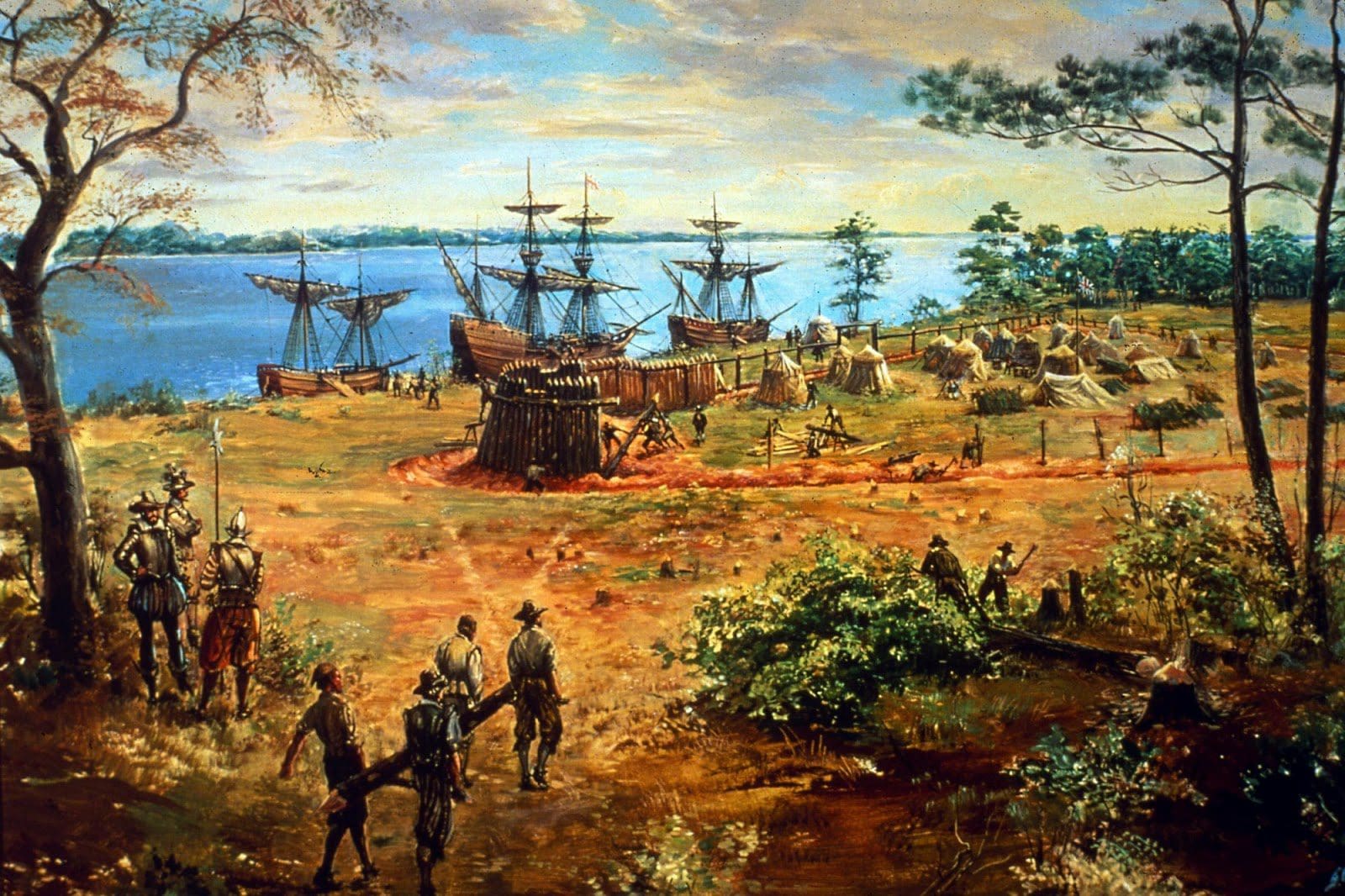
Polish craftsmen establish Jamestown colony’s export economy but are denied voting rights
In 1607, John Smith brought the first British settlers to Jamestown, who expected to find natural resources such as gold, lumber, and herbs. Sent by the Virginia Company of London, the settlers planned to found a colony and begin exporting goods to London. However, two problems significantly impeded their efforts.
First, some of the colonists were English noblemen with no military or manual labor experience. As a result, the colony found itself without skilled craftsmen or soldiers. What was worse, many refused to engage in work they felt was beneath them. Second, the physical location of Jamestown proved to be a poor choice. The land was swampy and made it a breeding ground for disease, the water supply was poor, and relations with the local Indian tribes were rocky at best.
Within less than a year, the colony was in danger of failure. No goods were heading back to England, disease was flourishing due to the lack of fresh water, food supplies were low, and little to no work had been done to establish an industrial base. In fact, much of the time had been spent unsuccessfully panning for gold in Virginia’s rivers.
On John Smith’s recommendation, the Virginia Company recruited a group of Poles, who arrived at Jamestown a year later in 1608 on the ship “Margaret and Mary” under the command of Christopher Newport. Smith previously traveled to Poland in 1603 to find artisans for his voyage to America and there were six Polish men he came to know well.
These six men were recruited to establish the manufacturing of glass, pitch, tar, soap, pot ash, and timber products. They were Jan Mata (glassmaker), Jan Bogdan (shipbuilder, pitch, tar), StanisÅ‚aw Sadowski (housebuilder and lumber specialist), Zbigniew StefaÅ„ski (glass maker and soap maker), MichaÅ‚ Åowicki (group leader), and Wawrzyniec Bohun (physician).
In their first week at Jamestown, the Poles dug a well and secured a reliable source of safe drinking water, something that the English settlers had failed to do. The water well stopped the spread of dysentery and death due to the drinking of swamp water. Having seen the colony’s squalid assemblage of huts, the Poles set up sawmills and began cutting lumber and beams to build livable shelters for the hapless colonists. (StefaÅ„ski and Bogdan would later go on to save John Smith’s life when he was attacked by several Indians.)
They also built a glass furnace, which established the first glass manufacturing industry in America. When the “Mary and Margaret” was ready to sail back to England, the Poles sent back a full line of glassware samples they were prepared to produce in commercial quantities, as well as a cargo of pitch distilled from Virginia’s pine trees.
In 1619, the Jamestown Legislative Assembly created a representative form of government that gave the right to vote only to colonists of English descent. This denied the Poles the right to be represented in a colony they helped to sustain and grow. As a result, they organized what became the first labor strike in American history. Their slogan was “No vote, No work”.
After facing angry politicians in England, the Jamestown government bowed to the demands of the Poles and granted them the same rights of all colony workers. It’s important to note that the strike wasn’t against unfair employers or work place practices. It was instead a fight for civil rights and inclusion in the political process.
As a final note, John Smith was delighted at the productivity of his Virginia Company that he hired three additional Poles, who arrived in 1609. They were Gwidon Stoika, Tomasz Mietus, and Karol Zrenica.
